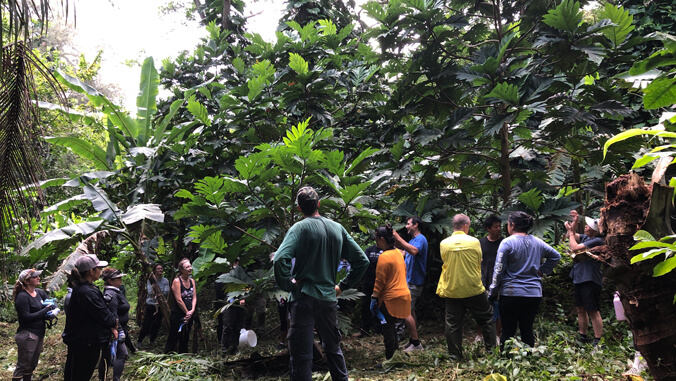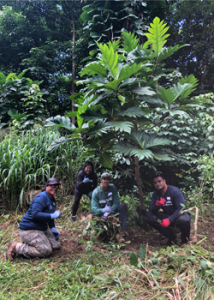
An innovative outreach program that helped thousands of Hawaiʻi public school students and teachers connect with Hawaiian culture and sustainable farming was cut short after an unexpected termination to its federal grant.


SPROUTS, short for “Students Propagating ʻUlu Trees for Schools on Oʻahu,” was run by the University of Hawaiʻi at Mānoa’s College of Tropical Agriculture and Human Resilience (CTAHR). It aimed to plant ʻulu (breadfruit) trees at public schools while teaching students about sustainability and cultural identity.
For many, SPROUTS was more than planting trees—it was about planting purpose.
In the past two years, the program worked with 84 teachers from 31 schools and reached more than 2,600 students across the state. At Kaimukī Middle School alone, students cared for 65 ʻulu trees, which were planted at 18 schools and four farms on Oʻahu.
The SPROUTS program initiative was supported by a $48,825 federal grant through the Hawaiʻi Department of Land and Natural Resources.
In February, the funding stopped without warning.
“I had to draw from other sources to continue purchasing supplies for the ongoing care of the trees,” said Lydi Morgan Bernal, a junior extension agent at CTAHR who has helped spearhead SPROUTS at Hawaiʻi schools.
Future opportunities clipped

The cut shelved a third professional development course and according to Bernal, has denied more than 1,000 students the chance to engage in ʻulu-based learning this year.
Throughout the years, public school teachers have praised the program’s impact on their students and themselves.
“I feel blessed to have been part of this ʻulu-focused course,” a teacher commented in an evaluation. “I’m eagerly anticipating the opportunity to share my knowledge and passion with others. I entered with hesitation but emerged with a deep appreciation for ʻulu trees, a range of practical skills, and innovative ways to engage my students.”

